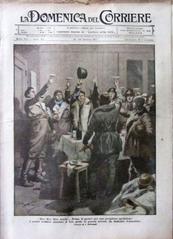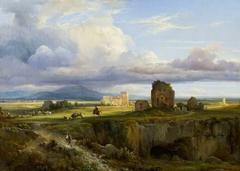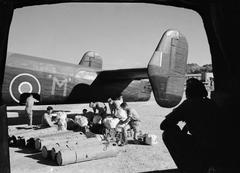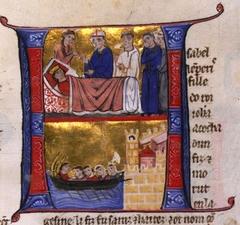Comprehensive Guide to Visiting Brindisi: Historical Sites in Puglia, Italy
Date: 19/07/2024
Introduction
Nestled in the heart of Italy’s Puglia region, Brindisi is a city that seamlessly blends ancient history with modern charm. Known for its strategic coastal location, Brindisi has been a vital port since the Roman era, serving as a gateway to the East. This guide aims to provide a comprehensive overview of Brindisi’s rich historical tapestry, practical visitor information, and travel tips to help you make the most of your visit.
Brindisi’s history is deeply rooted in its ancient origins. Initially settled by the Messapii tribe, the city became a significant Roman hub, marked by landmarks like the Via Appia’s terminal columns. Over the centuries, Brindisi played crucial roles during the Crusades, the Norman Kingdom of Sicily, and the Renaissance period, each era leaving indelible architectural and cultural imprints (Italy This Way, Italy Heaven, Lonely Planet).
Today, Brindisi is a treasure trove of historical sites, from the Castello Svevo to the Church of Santa Maria del Casale. The city also boasts vibrant cultural institutions like the Museo Archeologico Provinciale Francesco Ribezzo, ensuring that visitors can delve deep into its storied past. With its mix of historical landmarks, scenic waterfront, and delightful local cuisine, Brindisi offers a unique and enriching experience for travelers (Britannica, Italia.it).
Table of Contents
- [Historical Overview](#historical-overviewhistorical-overview)
- [Ancient Origins and Roman Era](#ancient-origins-and-roman-eraancient-origins-and-roman-era)
- [Medieval Period](#medieval-periodmedieval-period)
- [Renaissance and Baroque Periods](#renaissance-and-baroque-periodsrenaissance-and-baroque-periods)
- [Modern Era](#modern-eramodern-era)
- [Cultural Heritage and Preservation](#cultural-heritage-and-preservationcultural-heritage-and-preservation)
- [Visitor Information](#visitor-informationvisitor-information)
- [Visiting Hours and Tickets](#visiting-hours-and-ticketsvisiting-hours-and-tickets)
- [Travel Tips](#travel-tipstravel-tips)
- [Nearby Attractions and Accessibility](#nearby-attractions-and-accessibilitynearby-attractions-and-accessibility)
- [Alberobello](#alberobelloalberobello)
- [Lecce](#leccelecce)
- [Ostuni](#ostuniostuni)
- [Special Events and Guided Tours](#special-events-and-guided-toursspecial-events-and-guided-tours)
- [Brindisi Wine Festival](#brindisi-wine-festivalbrindisi-wine-festival)
- [Guided Tours](#guided-toursguided-tours)
- [Photographic Spots](#photographic-spotsphotographic-spots)
- [Roman Columns](#roman-columnsroman-columns)
- [Waterfront Promenade](#waterfront-promenadewaterfront-promenade)
- [Santa Maria del Casale](#santa-maria-del-casalesanta-maria-del-casale)
- [Practical Advice for Travelers](#practical-advice-for-travelerspractical-advice-for-travelers)
- [Best Time to Visit](#best-time-to-visitbest-time-to-visit)
- [Transportation](#transportationtransportation)
- [Accommodation](#accommodationaccommodation)
- [Local Cuisine](#local-cuisinelocal-cuisine)
- [Language](#languagelanguage)
- [Currency and Payments](#currency-and-paymentscurrency-and-payments)
- [Safety](#safetysafety)
- [Health and Medical Services](#health-and-medical-serviceshealth-and-medical-services)
- [Cultural Etiquette](#cultural-etiquettecultural-etiquette)
- [Dining and Cuisine](#dining-and-cuisinedining-and-cuisine)
- [Shopping](#shoppingshopping)
- [Festivals and Events](#festivals-and-eventsfestivals-and-events)
- [Day Trips](#day-tripsday-trips)
- [Practical Tips](#practical-tipspractical-tips)
- [FAQ](#faqfaq)
- [Conclusion](#conclusionconclusion)
Historical Overview
Ancient Origins and Roman Era
Brindisi, located in the Puglia region of Italy, boasts a rich history that dates back to ancient times. The city’s origins can be traced to the Messapii, an ancient Italic tribe, who established the first settlement in the area. The name “Brindisi” is derived from the Messapian word “Brention,” meaning “deer’s head,” due to the shape of its natural harbor.
The strategic location of Brindisi made it a significant port city during the Roman era. It became a crucial hub for trade and military operations, connecting Rome with the eastern provinces. The Via Appia, one of the most important Roman roads, terminated in Brindisi, facilitating the movement of goods and troops. The remnants of the Roman columns that marked the end of the Via Appia still stand today, serving as a testament to the city’s historical importance (Italy This Way).
Medieval Period
During the medieval period, Brindisi continued to play a vital role due to its strategic location. The city was a focal point during the Crusades, serving as a departure point for crusaders heading to the Holy Land. The Knights Templar and the Knights Hospitaller established a presence in Brindisi, further enhancing its significance.
In the 11th century, Brindisi became part of the Norman Kingdom of Sicily. The Normans fortified the city, constructing the Castello Svevo (Swabian Castle) to protect it from invasions. The castle, built by Emperor Frederick II, remains one of Brindisi’s most prominent historical landmarks (Italy Heaven).
Renaissance and Baroque Periods
The Renaissance period brought a cultural and architectural revival to Brindisi. The city saw the construction of several notable buildings, including the Church of San Giovanni al Sepolcro, which features intricate frescoes and Romanesque architecture. The influence of the Renaissance is evident in the city’s art, architecture, and urban planning.
During the Baroque period, Brindisi experienced further development. The Church of Santa Maria del Casale, with its stunning façade and elaborate interior, is a prime example of Baroque architecture in the city. The period also saw the expansion of the port, enhancing Brindisi’s role as a maritime hub (Lonely Planet).
Modern Era
In the 19th and 20th centuries, Brindisi underwent significant transformations. The unification of Italy in the 19th century brought about infrastructural improvements, including the expansion of the railway network, which connected Brindisi to other major Italian cities. The city’s port continued to thrive, becoming one of the busiest in the Adriatic Sea.
During World War II, Brindisi played a crucial role as a base for Allied forces. The city’s strategic location made it an ideal point for launching military operations in the Mediterranean. The war left its mark on Brindisi, with several historical sites bearing witness to this tumultuous period (Britannica).
Cultural Heritage and Preservation
Brindisi’s rich historical heritage is preserved through its numerous museums, archaeological sites, and cultural institutions. The Museo Archeologico Provinciale Francesco Ribezzo houses an extensive collection of artifacts from the city’s ancient past, including Roman sculptures, pottery, and inscriptions. The museum provides valuable insights into Brindisi’s historical significance and its role in the broader context of Mediterranean history (Museo Archeologico Provinciale Francesco Ribezzo).
The city’s historical center, with its narrow streets and well-preserved buildings, offers a glimpse into Brindisi’s past. Walking through the historic district, visitors can admire architectural gems such as the Cathedral of Brindisi, which dates back to the 11th century, and the Palazzo Granafei-Nervegna, a Renaissance palace that now serves as a cultural center (Italia.it).
Visitor Information
Visiting Hours and Tickets
- Museo Archeologico Provinciale Francesco Ribezzo - Open Tuesday to Sunday, 9:00 AM to 7:00 PM. Tickets cost €5 for adults and €3 for children.
- Castello Svevo - Open Monday to Friday, 10:00 AM to 6:00 PM. Entry is free.
- Cathedral of Brindisi - Open daily from 8:00 AM to 6:00 PM. No entry fee.
Travel Tips
- Best Time to Visit - The ideal time to visit Brindisi is during the spring and fall when the weather is mild and the tourist crowds are smaller.
- Getting Around - Brindisi is a walkable city, but public transportation and bike rentals are also available for convenience.
- Local Cuisine - Don’t miss trying local dishes such as orecchiette pasta, seafood risotto, and pasticciotto (a traditional pastry).
Nearby Attractions and Accessibility
Alberobello
Famous for its trulli houses, a UNESCO World Heritage Site, located about an hour’s drive from Brindisi.
Lecce
Known as the “Florence of the South,” Lecce is renowned for its Baroque architecture and is just a 30-minute drive away.
Ostuni
The “White City” of Ostuni, with its picturesque whitewashed buildings, is a 45-minute drive from Brindisi.
Special Events and Guided Tours
Brindisi Wine Festival
Held annually in September, this festival celebrates the region’s rich wine heritage with tastings, workshops, and live music.
Guided Tours
Various guided tours are available, including historical walking tours, food and wine tours, and boat tours of the harbor.
Photographic Spots
Roman Columns
Capture the iconic Roman columns that mark the end of the Via Appia.
Waterfront Promenade
Enjoy stunning views of the harbor and the Adriatic Sea at sunset.
Santa Maria del Casale
Photograph the intricate façade and interior of this Baroque church.
Practical Advice for Travelers
Best Time to Visit
The ideal time to visit Brindisi is during the spring (April to June) and fall (September to October) when the weather is pleasant, and the tourist crowds are smaller.
Transportation
Brindisi is well-connected by air, with the Brindisi-Salento Airport offering flights to major Italian and European cities. The city also has a good network of buses and trains, making it easy to explore the region.
Accommodation
Brindisi offers a range of accommodation options, from luxury hotels to budget-friendly B&Bs. It is advisable to book in advance, especially during the peak tourist season.
Local Cuisine
Don’t miss out on trying local delicacies such as orecchiette pasta, fresh seafood, and the region’s famous olive oil and wines.
Language
While Italian is the primary language, English is widely understood in tourist areas. Learning a few basic Italian phrases can enhance your travel experience.
Currency and Payments
The currency used in Brindisi is the Euro (€). Credit and debit cards are widely accepted, but it’s advisable to carry some cash for small purchases, especially in local markets and smaller establishments. ATMs are readily available throughout the city.
Safety
Brindisi is generally a safe city for tourists. However, like any other destination, it’s essential to stay vigilant, especially in crowded areas and tourist hotspots. Keep an eye on your belongings and avoid displaying valuables openly.
Health and Medical Services
Brindisi has several medical facilities, including hospitals and pharmacies. In case of emergencies, dial 112 for immediate assistance. It’s advisable to have travel insurance that covers medical expenses.
Cultural Etiquette
Italians are known for their warm hospitality. When greeting locals, a handshake is customary, and close friends may exchange kisses on both cheeks. Dress modestly when visiting religious sites, and always ask for permission before taking photographs of people.
Dining and Cuisine
Brindisi offers a delightful culinary experience with its rich Puglian cuisine. Don’t miss trying local specialties like orecchiette pasta, fresh seafood, and the famous burrata cheese. For an authentic dining experience, visit local trattorias and osterias. Tipping is appreciated but not obligatory; rounding up the bill or leaving a small amount is customary.
Shopping
Brindisi offers a variety of shopping experiences, from high-end boutiques to local markets. The Corso Umberto I is a popular shopping street where you can find fashion, jewelry, and souvenirs. For a more local experience, visit the Mercato Coperto, a covered market offering fresh produce, local delicacies, and handmade crafts.
Festivals and Events
Brindisi hosts several festivals and events throughout the year. The Feast of San Teodoro in May and the Brindisi Wine Festival in September are notable events that offer a glimpse into the local culture and traditions. Check the local event calendar for more information on upcoming festivals.
Day Trips
Brindisi is an excellent base for exploring the Puglia region. Popular day trips include visiting the white city of Ostuni, the trulli houses of Alberobello, and the baroque city of Lecce. Each of these destinations offers unique attractions and experiences.
Practical Tips
- Electricity - Italy uses a 230V supply voltage and 50Hz. The power plugs and sockets are of type F and L.
- Time Zone - Brindisi operates on Central European Time (CET) and Central European Summer Time (CEST) during daylight saving.
- Emergency Numbers - For police, dial 113; for medical emergencies, dial 118; and for fire services, dial 115.
- Wi-Fi and Connectivity - Free Wi-Fi is available in many public places, hotels, and cafes. Consider purchasing a local SIM card for better connectivity.
FAQ
What are the visiting hours for the Museo Archeologico Provinciale Francesco Ribezzo?
The museum is open Tuesday to Sunday, from 9:00 AM to 7:00 PM.
Is there an entry fee for the Castello Svevo?
No, entry to the Castello Svevo is free.
What is the best time to visit Brindisi?
The best time to visit is during the spring and fall when the weather is mild and the tourist crowds are smaller.
Conclusion
Brindisi stands as a testament to Italy’s rich historical and cultural heritage, offering a unique blend of ancient ruins, medieval fortifications, and vibrant modern attractions. Whether you’re wandering through the narrow streets of the historic center, exploring significant landmarks like the Castello Svevo, or enjoying the local cuisine at a waterfront café, Brindisi provides an immersive experience that captivates the senses.
The city’s strategic location has made it a pivotal point throughout history, from ancient Roman times to World War II. Today, Brindisi continues to thrive as a bustling port and cultural hub, attracting visitors from around the world. The well-preserved historical sites, coupled with the city’s warm hospitality, make it an ideal destination for history enthusiasts and casual tourists alike.
Whether you’re planning to visit the renowned Museo Archeologico Provinciale Francesco Ribezzo, take a leisurely stroll along the Lungomare Regina Margherita, or explore nearby attractions like Alberobello and Lecce, Brindisi promises a memorable journey through time. With practical travel tips and comprehensive visitor information, this guide aims to help you make the most of your visit to this enchanting city (Rough Guides).
References
- Italy This Way. (n.d.). Brindisi. Retrieved from https://www.italythisway.com/places/brindisi.php
- Italy Heaven. (n.d.). Brindisi. Retrieved from https://www.italyheaven.co.uk/puglia/brindisi.html
- Lonely Planet. (n.d.). Brindisi. Retrieved from https://www.lonelyplanet.com/italy/puglia/brindisi
- Britannica. (n.d.). Brindisi, Italy. Retrieved from https://www.britannica.com/place/Brindisi-Italy
- Italia.it. (n.d.). Brindisi. Retrieved from https://www.italia.it/en/puglia/brindisi
- Rough Guides. (n.d.). Brindisi. Retrieved from https://www.roughguides.com/italy/puglia/brindisi/



